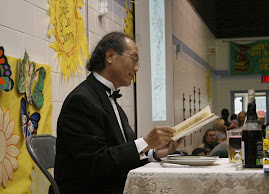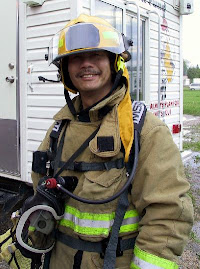Some kids can be down-right unruly and rude in school. They spit, swear, curse, put each other down with sexual innuendos, cultural insults and racial slurs. They bully, harass, fight and physically hurt each other. They disobey and talk back to teachers as they do their parents.
Are we surprised at this phenomenon? The kids are just learning so fast and well from what some members of the society teach them by example. The school is merely a mirror of the society at large.
At least that’s how parents and the public perceive how school kids behave today. And, the popular, yet near-mythical, belief is that schools are doing nothing about it.
Is this perception true or false? The answer is “yes” and “no”.
This kind of student behaviour does happen; however, seldom is it true that schools are doing nothing about it.
Some schools deal with the concern more effectively than others. Effectiveness in discouraging inappropriate behaviour and intentionally teaching students and encouraging desirable ones along with common courtesy and inter-personal respect is built upon a team effort made not only by the school staff, but parents as well.
I know that dealing with this problem is "do-able" because my staff and I, a school principal, have effectively brought not only order to the school, but courtesy and respect back in the lives of students. And, we have maintained and enjoyed this kind of peaceful school culture for the past 15 years.
Our school was not the same fifteen years ago. The behaviour I cited above was the school environment then. When I was appointed the principal there, I had to do something proactive, unusual, and drastic. I visited all 250 families of the school community in the summer before my official term of office began.
The serendipitous outcome of my home visits was amazingly productive, way beyond my wildest expectations. Since I was new to the school, I had no idea who was a “trouble maker”. I met the students and their parents on their home turf. I listened to their concerns and filed them away for later use. I shared with them my stance on school issues. As I left each home, the parents pledged their support.
The staff and I saw the urgent need for an effective strategy to re-gain the behavioural beach-head at the school. We took time and care to hammer out a school discipline plan which consists of three simple rules (no physical and verbal violence, and total respect) and a behaviour management protocol. The backbone of this strategy lies in the principles that discipline is everybody’s business and the rules must be enforced fairly and consistently.
The students and parents had plenty of getting used to this new set of expectations and a new way of doing things. However, by golly! It worked.
In a brief period of three months, behavioural change at the school was so evident that parents made positive comments at the November parent-teacher conferences. The community as well as the staff have experienced that small miracles can and do happen when we live as we believe.
To prod the proverbial beast along, the carrot works doubly well with the stick. We implement positive reinforcement strategies also. We publicly award the top four well behaved classes of the month with certificates and banners. We reward teacher-nominated “Students of the Month” from each class to have lunch provided by the principal. We recognize deserving students with certificates and “warm fuzzies”, and by sendig home "good News" post-cards.
Although the standard of courtesy and respect is not perfect, having basked in the relative safe, happy, and dignified school environment for the past fifteen years, we never looked back. With misbehavior mostly out of the way, we have been able to focus on the business of teaching, learning, and  relationship-building in fun, excitement, and wonder as a school community.
relationship-building in fun, excitement, and wonder as a school community.
Hodding Carter, a journalist and author, was quoted to have said: “There are only two lasting bequests we can hope to give our children, one is roots, and the other, wings.”
Roots are the eternal verities such as honesty, integrity, justice, compassion, charity, faith, hope, quest for knowledge, and the pursuit of excellence. Having an anchor of deep roots helps one to withstand the shifting tides of societal values and storms in life. Roots begin at home. Children learn by watching at home and, eventually, at school.
Wings, on the other hand, are the innate gifts, talents, knowledge, and skills which are uncovered, developed, and inculcated through years of guidance and nurture. Wings help us fulfill our human potential in life. Winglets sprout at home when children are young.
Against the back-drop of a “Me! Me! Me! ” societal culture where self-indulgence, ME-centredness, disrespect, and violence tragically teach such destructive lessons to our children, schools can rise above and teach them to be different... to become courteous, respectful, non-violent and other-centred.
Is that wildly counter-cultural, or what?
There are many Manitoba schools which have impressive tried-and-true records of school discipline and academic excellence practised in a warm and nurturing environment. Parents just need to look around, talk with friends, and shop for those oases for their children.




